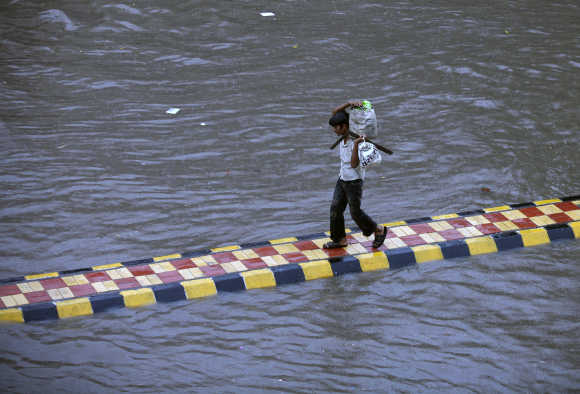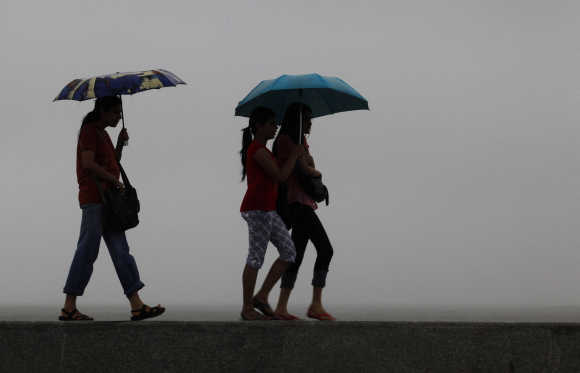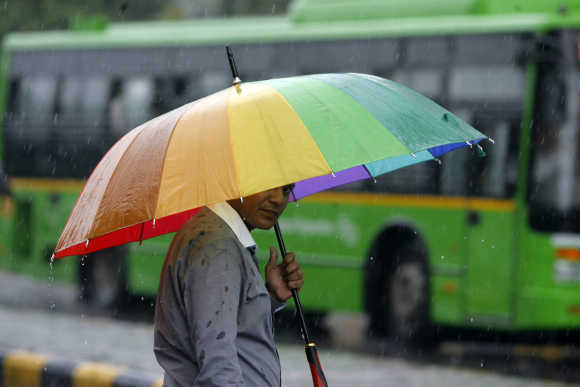 | « Back to article | Print this article |
Monsoon 30% below: What government should do
A massive 30 per cent deficiency in the monsoon rainfall in June, coupled with an anticipated low precipitation in September, may add to the government's difficulties in achieving its growth and fiscal deficit targets.
Agriculture may not be the only victim of poor rainfall.
Its contribution to gross domestic product may have dipped to mere 15 per cent but it still sustains the livelihood of over half of India's population.
Rural income has, in recent years, been seen to impact the demand for two-wheelers and numerous other white goods, which contribute revenue to the exchequer.
Click NEXT to read further. . .
Monsoon 30% below: What government should do
On top of that, if the government has to increase its spending on job creation and other drought-relief measures, which seems quite likely, the fiscal deficit will further worsen.
Equally worrisome are the prospects of further food inflation, which is already in double digits.
Of course, it is perhaps premature to view the first month's dismal performance of the monsoon as a harbinger of a full-blown drought -- for which July rainfall would really be a deciding factor -- but its possibility in some areas cannot be ruled out.
Most weather prediction models used by global weather-watch agencies foresee normal rainfall only in north-eastern India and, to some extent, in parts of southern India, especially along the western coast.
Click NEXT to read further. . .
Monsoon 30% below: What government should do
The rest of the country, including northern, central and western India, is projected to receive below-normal rainfall, the likely worst affected being Rajasthan and Gujarat.
Predictably, the India Meteorological Department does not fully endorse this prognosis.
Nevertheless, it concedes that September rainfall could be hit because of the likely emergence of the east Pacific Ocean temperature anomaly, popularly called El Nino, and that the north-western region may get below-par rainfall.
Crop output there might not suffer much, as the grain belt is heavily irrigated.
But the increased use of diesel to run pump sets in the absence of regular power supply in this region and elsewhere in the country is bound to swell the overall diesel subsidy bill.
Click NEXT to read further. . .
Monsoon 30% below: What government should do
Worse, it will further lower the already rapidly receding water table in most states.
Equally worrisome is the likelihood of inadequate refilling of the country's 80-odd major water reservoirs, where the current water stock is reckoned at just 16 per cent of the capacity against 27 per cent at this time last year.
This can adversely hit the production of hydropower and water flows in irrigation canals.
This apart, the anticipated water stress in central and western India is likely to jeopardise the production of coarse cereals, such as maize, bajra and jowar; oilseeds like soybean and groundnut; and pulses, notably tur or arhar; and cotton.
Most of these commodities are key contributors to high food inflation.
Click NEXT to read further. . .
Monsoon 30% below: What government should do
Thus, the government can ill-afford to be complacent and hope that the IMD's projection of overall normal rainfall (96 per cent of the long-term average) would turn out to be true, normalising the situation.
Though the agriculture ministry claims to have put in place elaborate contingency plans for saving crops, action on this front alone may not suffice.
Prior planning is also necessary to ward off the impact of low rainfall on other sectors. Otherwise, India's much-needed economic rebound may remain elusive.





